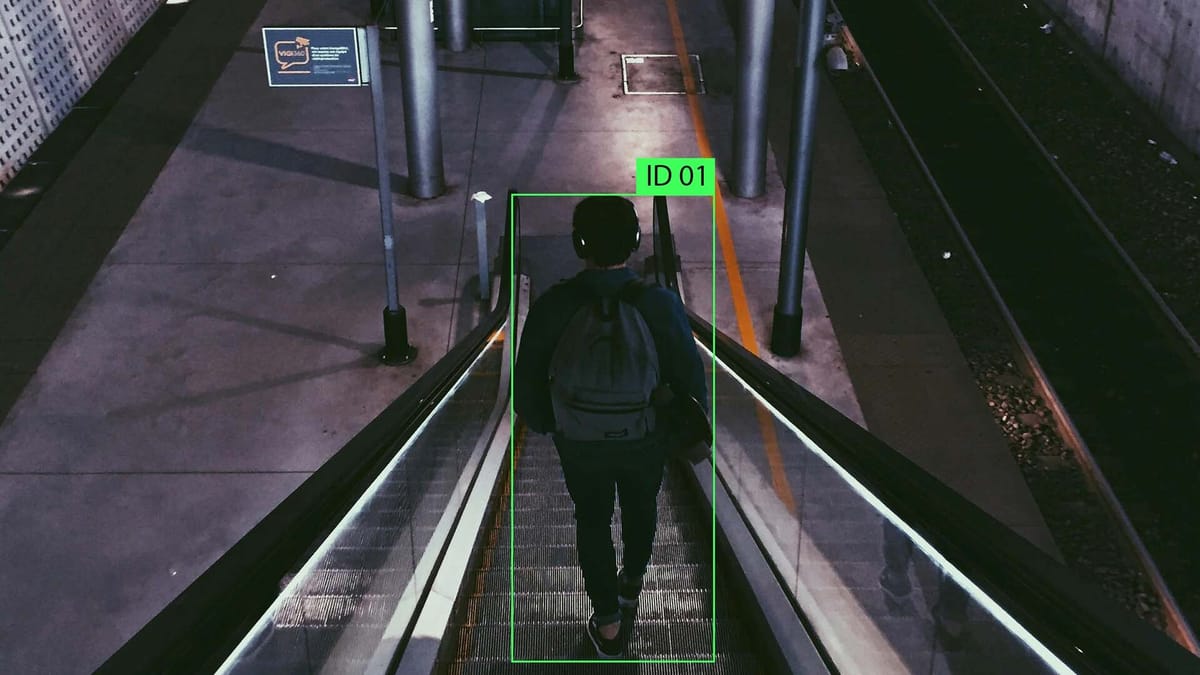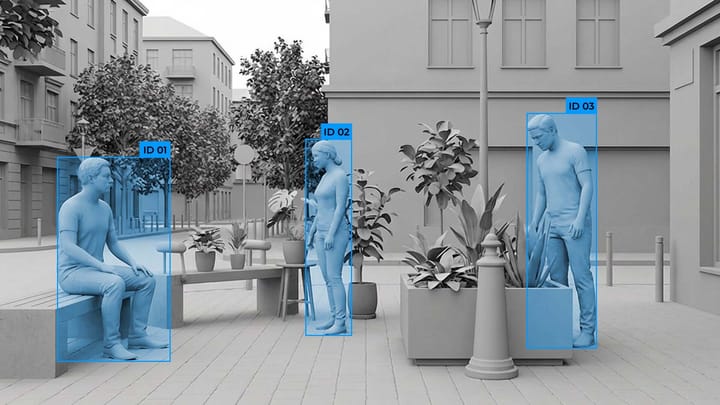Verifying Chain-of-Thought: Labeling Reasoning Steps in Model Outputs

Chained thought prompting is a way to make language models think through problems step by step instead of jumping to a final answer right away. It has become popular because it helps models perform better, especially in tasks that require reasoning or logic. This method also makes it easier for people to see how the model thinks because every step is recorded. This way, you can often tell where the reasoning broke down if something goes wrong.
As people rely more on AI to make decisions and solve problems, it becomes increasingly important to know if the steps the model is performing make sense. Even if the final answer looks good, the model's path may be full of mistakes or misplaced ideas.
Introduction to AI Model Verification and Chain-of-Thought
Checking the chain of thought means going through the model's reasoning step by step and assessing whether each part makes sense. Instead of marking the final answer as correct or incorrect, annotators look at how the model got there. They check whether each step is accurate, whether it follows from the previous step, and whether it helps solve the problem. Depending on their fit, steps can be marked as correct, incorrect, partially correct, or off-topic. This process gives a much clearer picture of how well the model is reasoning overall.
Such detailed labeling is helpful in several ways. It helps researchers find patterns in how models make mistakes and allows them to train new models to avoid the same problems. It is also helpful in creating datasets that focus not only on the answers, but also on how they are arrived at. Over time, this can lead to more reliable, more understandable AI that is better at solving problems in a way that humans can understand. Instead of just sounding confident, the model will think clearly.
Understanding the Importance of Verification in Large Language Models
As large language models become more advanced and widely used, there is growing attention to how much we can trust their results. These models can produce detailed, human-like answers, but that doesn't always mean that the information is correct or the reasoning is sound. Sometimes they arrive at the correct answer for the wrong reasons or provide convincing explanations that fall apart when examined in more detail. That's why verification - checking that what the model says is true - becomes a key part of working with these systems.
It's not just about whether the answer looks good or sounds right, but whether it's based on sound reasoning and accurate facts. In complex problems, where models are expected to explain the thought process step by step, checking each part of the process becomes even more critical.
Foundations of Chain-of-Thought and Chain-of-Verification Prompting
Chain thinking as a hint is based on the idea that language models work best when directed to think step by step rather than provide immediate answers. This approach encourages the model to break the problem into smaller parts, working through each to reach a conclusion. Instead of guessing, the model is encouraged to "think out loud," which can improve both accuracy and interpretability.
Building on this, chain thinking as a prompt introduces a second level of reasoning. Instead of simply generating solutions, the model is prompted to review or critique the steps it has taken. This creates the opportunity to identify errors, revise faulty logic, or confirm the correctness of the steps before settling on a final answer. The model effectively plays the role of both a problem solver and a checker. This two-step structure, first solving, then checking, reflects a more thorough reasoning process and opens the door to stronger control and more reliable results.
Comparing CoT and CoVe Techniques
The Chain of Thought (CoT) and Chain of Verification (CoVe) methods aim to improve the reasoning of language models, but they approach the task differently. CoT hints focus on guiding the model to create a step-by-step path to the final answer. This makes the model's reasoning process more visible and often helps improve the performance of tasks that require logic, computation, or multi-step understanding. However, CoT alone does not guarantee that every step is correct or that the reasoning path is reliable. The model may still contain incorrect steps that sound plausible, leading to false or misleading results.
CoVe hints at bridging this gap by adding a layer of self-assessment. After completing the initial reasoning, the model is prompted to go back and check individual steps or evaluate the logic behind the complete chain. This helps to identify errors that may have been missed and creates a more apparent distinction between strong and weak reasoning. While CoT focuses on generating reasoning, CoVe focuses on verifying it. Together, they form a more complete approach: CoT builds a path, and CoVe verifies that it leads to the right place.
Exploring the Chain-of-Verification (CoVe) Technique
The Chain of Verification (CoVe) method is designed to increase the reliability of a language model's output as the model evaluates its reasoning. Instead of stopping after creating a step-by-step explanation or answer, the model is prompted to reflect on what it has just written. This reflection may include checking each step of the reasoning for accuracy, identifying logical gaps, or confirming whether the steps support the final answer. In many cases, this verification process helps to identify minor errors that may have gone unnoticed in the original chain of thought.
CoVe can be applied differently, depending on the task and setting. Sometimes the model checks its reasoning as soon as it is created, while in other cases, a second model or a separate pass is used for verification. The key idea is that the validation acts as a second level of reasoning focused on quality control rather than problem solving. This extra step makes it easier to filter out erroneous answers and strengthens the logical validity of correct ones. As language models are expected to handle more complex and demanding tasks, methods like CoVe offer a practical way to reduce the number of errors and increase confidence in the reasoning process.
Optimizing Prompt Engineering for Accurate Outputs
Hint engineering plays a central role in shaping how a language model approaches a task, and small changes in wording can have a noticeable impact on the quality of the result. For tasks that require reasoning, precision, or structured thinking, the way the instructions are presented can guide the model to clearer, more reliable answers. Well-designed prompts can encourage step-by-step thinking, reduce confusion, and minimize standard failure modes such as hallucinations or missed logic. On the other hand, vague or overly open-ended clues often lead to incomplete or incorrect answers, especially in complex tasks.
When using techniques such as a chain of thought or a chain of verification, the structure of the hints becomes even more critical. The hints should lead the model to reason about the problem and set expectations for revising or verifying those reasons. This may include separating the steps (e.g., "First solve the problem. Then check each step for accuracy.") or using examples demonstrating careful thinking and self-correction. The goal is to create prompts that lead to results where both the process and the final answer are compelling. Optimizing these prompts is an ongoing process that often requires testing, refinement, and careful analysis of the model's behavior.
Techniques to Minimize Factually Incorrect Responses
Reducing factual errors in the output of language models is a significant goal in research and real-world applications. One common approach is search augmentation, where the model connects to a knowledge source, such as a database or search engine, to obtain accurate information when generating an answer. This helps to tie the model's output to real-world facts instead of relying solely on patterns from its training data. Another method involves enhancing the prompts to include instructions such as "use only facts you are sure of" or "check each statement", which can reduce the tendency to guess or hallucinate.
Chain of thought and chain of verification techniques also help minimize factual errors. It becomes easier to identify where a wrong assumption or false statement enters the process by prompting the model to break down its reasoning and then check each part. In controlled environments, human annotators can flag errors in reasoning chains, creating training data that helps models learn to avoid similar mistakes. Reinforcement learning from human feedback (RLHF) is also used to train models to favor accurate and well-reasoned conclusions over confident but incorrect ones.
Best Practices for Chain-of-thought verification
- Use clear and consistent markings. Define a small set of meaningful labels, such as "correct", "incorrect", "irrelevant", or "unsupported". This helps to standardize the evaluation of reasoning steps and reduces ambiguity during annotation or model-based verification.
- Separate the reasoning and verification steps. Generate the whole chain of reasoning first, and then validate it. Separating these steps avoids early corrections that affect the original reasoning and allows for a more honest evaluation of each step.
- Provide examples in the tips. Include sample reasoning chains and corresponding checks to help the modeler or annotator. Seeing good and bad reasoning examples helps set expectations for what to look for during validation.
- Focus on logical consistency and relevance. The review should check whether each step logically follows from the previous one and contributes to solving the problem. Highlighting logic breaks or unnecessary steps improves the overall quality of the reasoning.
- Ensure that the verification process is manageable. Use short, focused reasoning steps and keep verification instructions simple. This helps avoid overloading the verifier and supports more precise and accurate judgments in longer chains.
Challenges and Limitations in Verification Approaches
- Subjectivity in evaluating steps. Verifying reasoning steps often involves interpreting whether a step is logically sound or factually correct, which can be subjective. Different annotators may have different opinions on borderline cases, especially when steps are vague, indirect, or partially correct, making consistent labeling difficult.
- Scalability and annotation effort. Step-by-step verification is time-consuming, especially for long chains of reasoning. It requires careful reading and evaluation, limiting the amount of data humans can realistically annotate. Automating the process with models increases efficiency but can reduce accuracy.
- Model bias towards self-justification. When models are asked to verify their reasoning, they often reinforce what they have already said rather than critically evaluate it. This tendency toward self-confirmation can undermine the purpose of validation and mask errors in the reasoning process.
- Ambiguity in reasoning tasks. Some reasoning tasks, especially those that are open-ended or abstract, do not have a single, clearly defined correct path. In these cases, assessing whether a step is "correct" or "useful" becomes more difficult, and validation may reflect preferences rather than strict correctness.
- Limited generalizability across domains. Assessment methods that work well in one domain (e.g., math problems or quizzes) may not transfer easily to other domains, such as legal reasoning or medical reasoning. The quality and standards of reasoning vary from domain to domain, so prompts and assessment methods often need to be customized to the specifics of the domain.
Summary
Chain-of-thought verification in large language models is a growing area of focus aimed at improving the reliability, transparency, and overall quality of model output. Instead of evaluating only the final answer, this approach emphasizes checking the reasoning steps that lead to it, using techniques such as chain of verification (CoVe) to detect errors, weak logic, or irrelevant information. These verification processes can be supported by clear annotation guidelines, well-designed prompts, and structured scoring frameworks that promote consistent judgments. While they offer a path to more robust AI systems, they are also fraught with challenges such as subjectivity, scalability limitations, and difficulties in generalization across domains. Nevertheless, by combining careful design of prompts, evaluation of reasoning, and validation steps, it becomes possible to develop models that perform better and think in more interpretable ways that align with human expectations.
FAQ
What is chain-of-thought (CoT) prompting?
CoT prompting is a method that guides language models to reason step by step, improving performance on tasks that require logical or multi-step thinking.
How does chain-of-verification (CoVe) differ from CoT?
CoVe adds a second stage where the model or annotator checks the reasoning steps generated in CoT, aiming to catch mistakes and assess the logical flow.
Why is verifying reasoning steps important?
Verifying steps helps identify flaws in logic or incorrect facts, even if the final answer appears correct, making the output more trustworthy and transparent.
What labels are commonly used in step verification?
Labels like "correct", "incorrect", "irrelevant", and "unsupported" help categorize each reasoning step for consistent evaluation.
What role does prompt engineering play in reasoning accuracy?
Well-designed prompts guide the model to produce more explicit reasoning and self-check its answers, leading to more accurate and structured outputs.
How can factual accuracy be improved in model responses?
Techniques like retrieval augmentation, CoVe, and reinforcement learning from human feedback help reduce hallucinations and keep answers grounded in truth.
What is a significant challenge in verifying reasoning steps?
One key challenge is the subjectivity in judging whether a step is logically valid, especially in ambiguous or open-ended tasks.
Why is it essential to separate the reasoning and verification stages?
Keeping these stages separate prevents the original reasoning from being biased by immediate corrections and allows for more objective evaluations.
Can models reliably verify their reasoning?
Not constantly, models often reinforce their outputs instead of critically evaluating them, which can hide errors and reduce verification effectiveness.
What limits the general use of verification techniques across domains?
Reasoning standards vary between fields, so verification approaches must be tailored to specific domains like math, law, or healthcare.



Comments ()